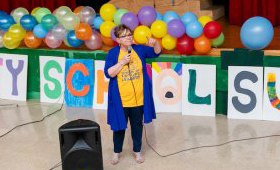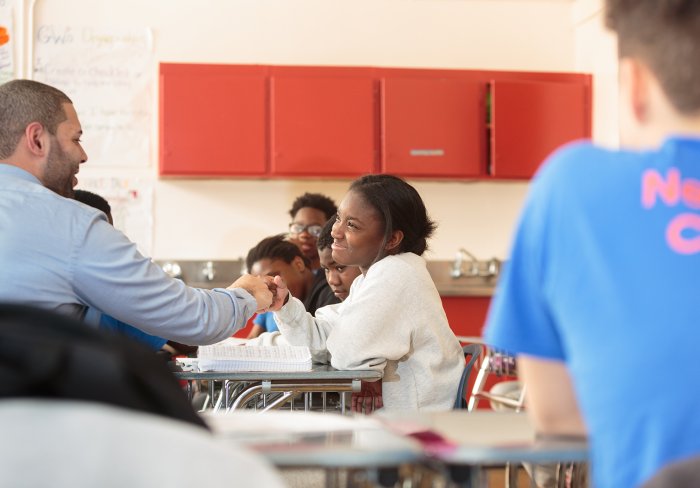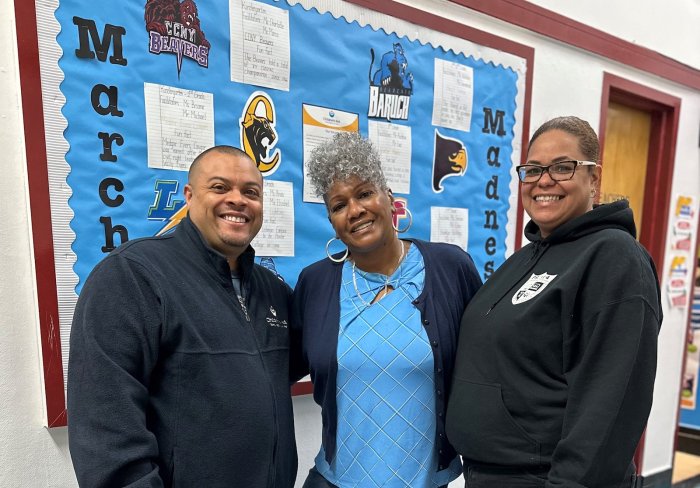Migdalia Cortes never thought she’d spend her career caring for children. As an undergraduate in college, she studied accounting and business administration while working as an assistant accountant. She thought she’d found her path.
Then she got a job as the Borough Director in the Brooklyn Sentencing Program for the Vera Institute of Justice, a nonprofit organization focusing on criminal justice issues. The work there changed her worldview, and it helped to catapult her into a career that has ranged from higher education to public service to nonprofits.
“I didn’t see the connection at first,” Migdalia said. “I didn’t go looking for these jobs. It was more like, they came looking for me. Once I started working with children, my heart softened, and I knew what I needed to do with my life.”
For the past 15 years, Migdalia has served as the Community School Director for Salomé Ureña Campus, a Children’s Aid community school in upper Manhattan. During this Community School Coordinators Week, we’re celebrating the vital role that Migdalia – and coordinators throughout our agency – play in the lives of our clients. The mission of our work at Children’s Aid is to ensure that every child in New York has what they need to learn, grow, and lead. Community school directors and coordinators are the people who work with children and families to make sure those needs are met every day.
“Before COVID, we were open from 8 in the morning until 10 at night,” Migdalia said. “We work all day to provide resources for youth and families to help them thrive and become better people. We’re here to support them.”
After working at Vera, Migdalia continued her career in nonprofits, spending time with agencies that helped young people get reconnected with their education or begin their careers. She discovered such a passion for the work that she decided to return to school, completing both her bachelor’s and master’s degrees at the Metropolitan College of New York.
From there, she worked for the Center for the Next America, a federally funded nonprofit that started and developed community, education, and employment programs. Part of her work there was identifying children who were likely to drop out of school and providing the resources they needed to remain focused on their education.
“I’ve always been the second in command, and I love that role,” she said. “The director or the leader had a vision, and I made it come true. I would see the proposal on a piece of paper and turn it into something real. In a year, we’d go from ideas to programs.”
In her final stop before Children’s Aid, she spent seven years working for the New York City Department of Juvenile Justice. In her role there, she saw up close how systemic societal failures were leading to children committing crimes and spending time behind bars. It broke her heart.
“Even the most hardened children – they’re still children,” she said. “They’d gravitate to me because I showed them that I cared about them. To the rest of the world, they felt forgotten, or like they were a burden. But I told them the truth, and I treated them with respect. That’s what kids want and need from us.”
At Salomé Ureña, Migdalia manages the activities, programs, and services on campus. Our community school model focuses on using local resources to meet the holistic needs of students. Students at the schools have access to medical and dental care, after-school programs, and social-emotional services.
“Some days, we will learn that a family of ours is struggling with homelessness, so we will connect them with housing resources,” she said. “Other days, there might be a family dealing with some food insecurity, or who can’t afford school supplies. We do whatever we can to meet those needs. Because math, science, and social studies are important, but children cannot learn those subjects if they’re hungry or they don’t have a safe place to sleep.”
With students returning to campus this month, Migdalia has been focused on ensuring the safety of everyone on campus, and of restarting after-school activities for the first time in nearly two years.
“Every day is a challenge, but that’s why I love it,” she said. “I’ve been here for 15 years, and it’s a new challenge every day. This is not a job for me. It’s a joy.”







